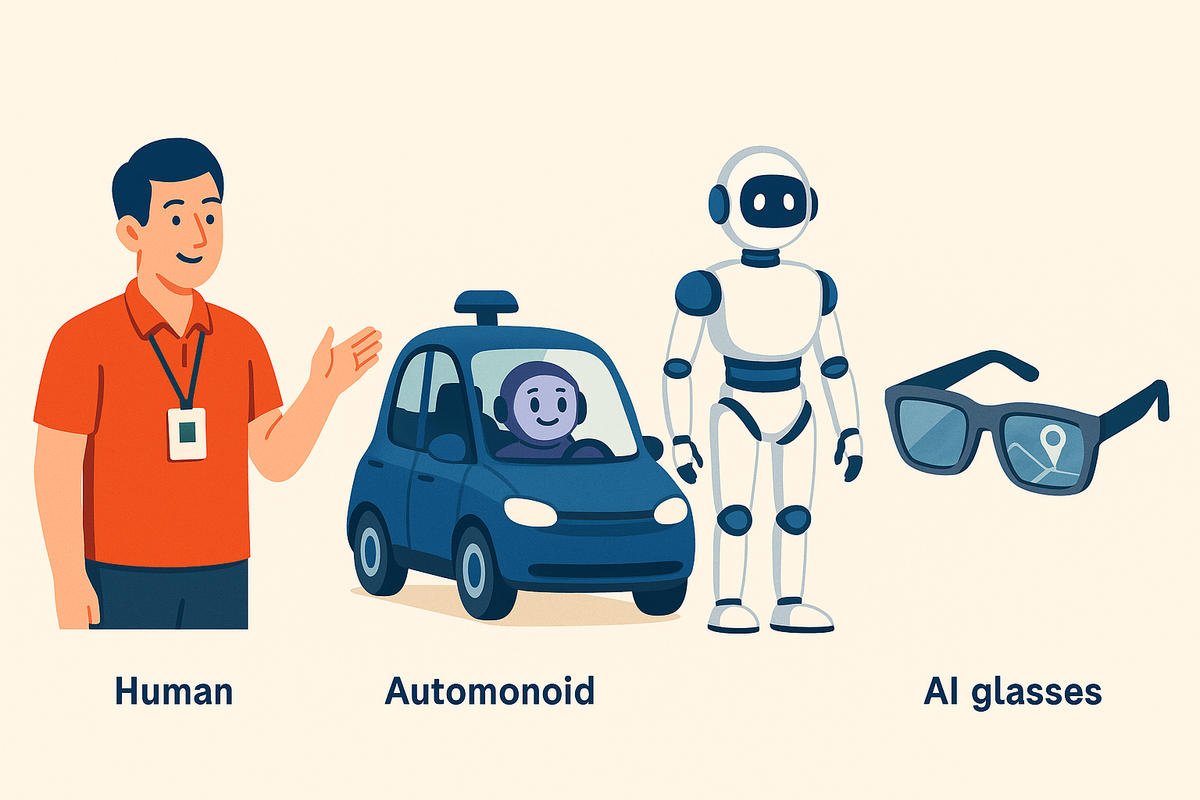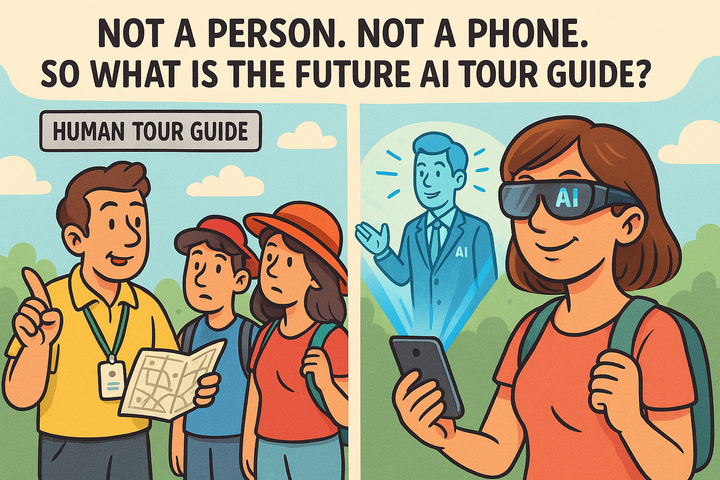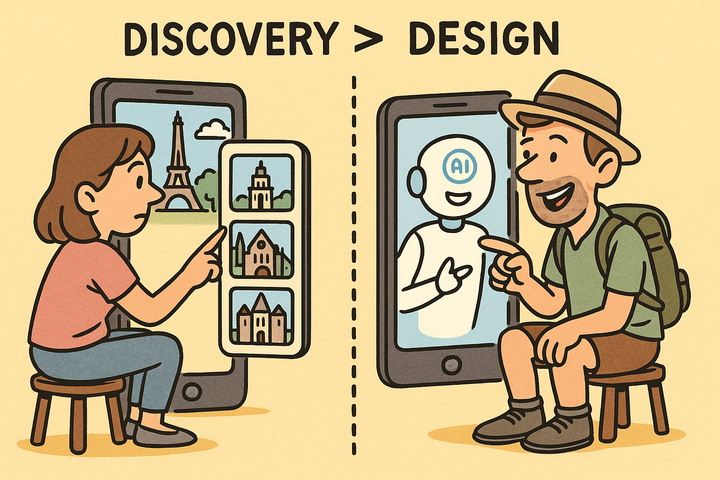Finding the right tour guide form factor for 2030
By 2030, the question isn’t whether AI can tell a story — it’s which form factor will guide us through the world. From human hosts to vehicles, robots, and AI glasses, the future of touring will depend on who — or what — travellers choose to follow.

In 2025, narration is easy. Any AI can describe a landmark or tell a story. The harder question — and the one that will define the next wave of travel tech — is what will be the dominant tour guide form factor by 2030?
Guiding has always been more than narration. It’s logistics: timing, orientation, coordination, presence. The winning form won’t just speak — it will move with you, adapt to context, and run the day.
Let's look at the options:
The human
Humans still define the gold standard — intuitive, empathetic, responsive.
But even within human guiding, there’s a split:
- First-person guiding — “I make the wine you’re drinking.” The guide is the story, speaking from lived experience.
- Third-person guiding — “This is how the winemaker makes the wine.” The guide tells the story, acting as narrator and organiser.
First-person guiding creates intimacy and trust, but it’s limited to small, personal settings. Third-person guiding scales — museum tours, city walks, coach trips — but loses that emotional immediacy.
And neither scales to the total addressable market. Travellers spend 8–12 hours a day out of the hotel, most of it unguided. The logistical gap remains vast.
By 2030: human guides will dominate first-person and specialist experiences — but represent only a small fraction of total guided hours.
The autonomous vehicle
Guides on wheels — or in the air.
Whether it’s a self-driving car or a pilotless eVTOL like EHang’s new model, vehicles are already taking over the logistical layer of travel. They can handle routes, pacing, and comfort — and integrate narrative seamlessly through in-vehicle AI.
Inside, travellers will meet AI characters — hosts, storytellers, and companions appearing on screens or through voice interfaces — turning mobility time into a guided experience rather than a silent transfer.
But once the doors open, the guidance stops. The story doesn’t walk with you. Without a handoff to another form — wearable, glasses, pendant — the experience breaks at the kerb.
By 2030: autonomous vehicles will dominate in-transit guiding, turning mobility time into curated experience time. But they won’t be the complete solution — they’ll need to hand off the journey to whatever guides you on foot.
The humanoid robot
The humanoid robot brings charisma, embodiment, and crowd control — the physical presence of a guide with none of the fatigue.
But cost, durability, and social readiness mean they’ll stay mostly in controlled spaces — museums, campuses, hotels.
By 2030: humanoid robots will dominate fixed-location hosting and indoor tour environments, not open-street guiding.
Beautiful moments for humanoid robots and people
— CyberRobo (@CyberRobooo) October 12, 2025
During China's National Day holiday, AGIBOT brought its Lingxi X2 and A2 humanoid robots to tourist attractions in cities such as Shanghai, Xuancheng, and Nanjing, interacting with tourists, providing tour guides, and performing… pic.twitter.com/pS2cerraRf
The AI glasses
If you change how people see, you change how people sightsee.
Around 65% of adults in the UK already wear glasses — so adoption won’t start from zero. Just as flip phones quietly became smartphones, everyday eyewear will become AI glasses — and once it happens, it will feel obvious.
AI glasses will handle both narration and navigation: highlighting routes, translating text, surfacing stories, even syncing with friends in real time.
They’ll make immersive experiences possible everywhere — and by 2030, that won’t be a luxury, it’ll be the expectation. Travellers will bring their own devices, and destinations will design for BYOD guiding — experiences that appear automatically through the traveller’s lenses.
By 2030: AI glasses will dominate sightseeing, controlling both the visual and logistical layer of tourism.
The pendant or wristband
Audio-only wearables are the minimalist counterpoint — no screens, no gaze control, just ambient prompts. Perfect for walking directions, time cues, and micro-interventions — “turn left at the fountain,” “your table’s ready,” “sunset starts in five minutes.”
They can handle logistics — timing, coordination, pacing — but they can’t see. Without visual awareness, they can’t interpret or highlight what’s in front of you.
By 2030: pendants and wristbands will dominate lightweight, background assistance — the quiet layer that guides without looking.
The takeaway
You can’t design for 2030 without predicting the form factor. It’s not a feature choice — it’s the foundation.
The next generation of travel experiences — and the systems that deliver them — will all be built around the form travellers use to connect with the world.
Guiding won’t be defined by who tells the story, but by how the world is seen. Because if you change how people see, you change how people sightsee.
Want to read more like this?
Low volume. Short length. Focused content.
We know you're busy — only the good stuff, no noise.



